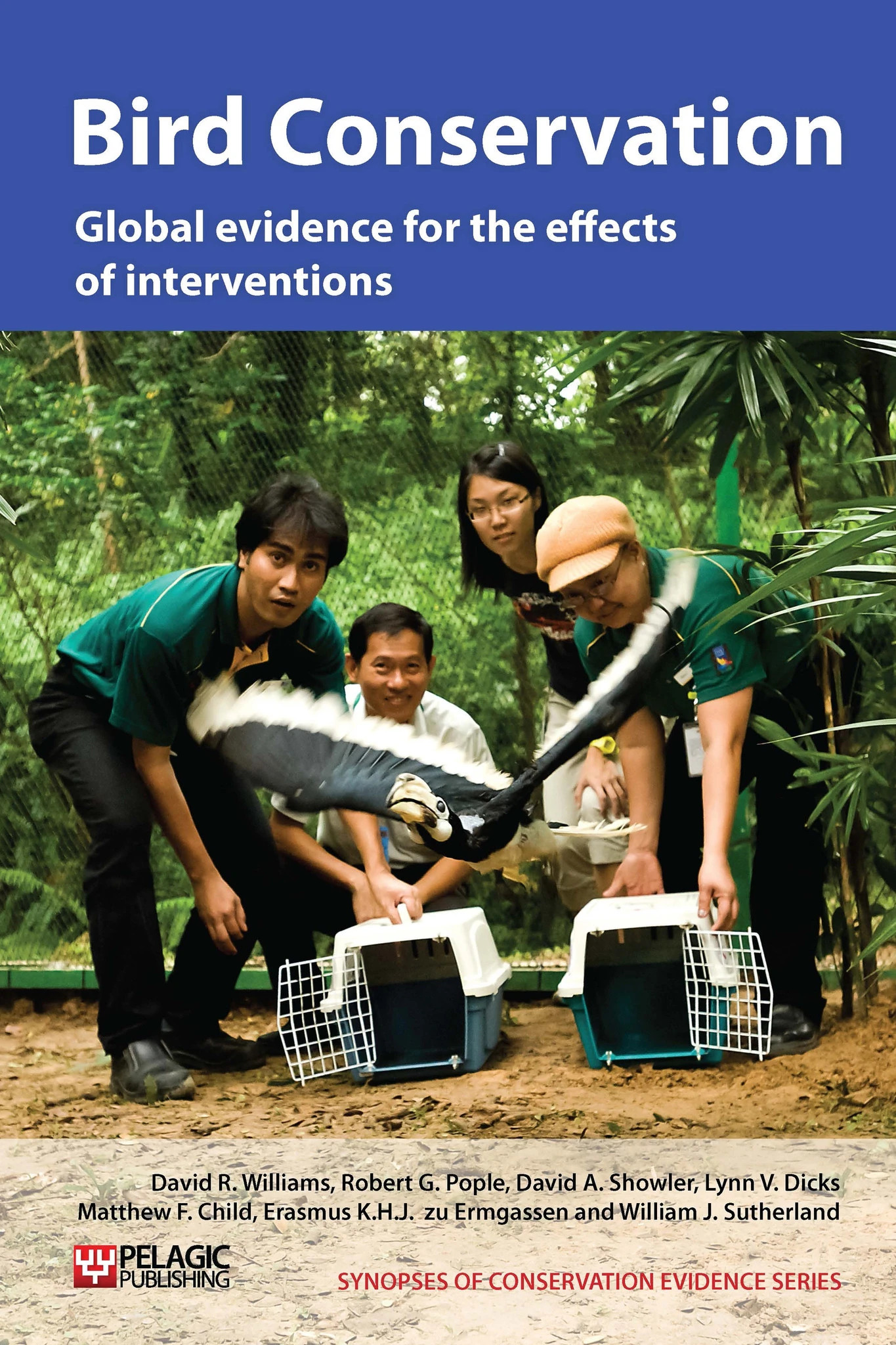Actions to conserve biodiversity
We have summarised evidence from the scientific literature about the effects of actions to conserve wildlife and ecosystems.
Review the evidence from the studies
Not sure what Actions are? Read a brief description.
Search for evidence
e.g. "frogs chytrid"
454 Actions found
Refine
Hide
454 Actions found
Download Actions
| 0 selected |
|
Order results by:
| Action | Effectiveness | Studies | Category | |
|---|---|---|---|---|
|
Use ‘mussel socks’ to prevent birds from attacking shellfish Action Link |
Likely to be beneficial | 1 |
|
|
|
Increase water turbidity to reduce fish predation by birds Action Link |
Unknown effectiveness (limited evidence) | 1 |
|
|
|
Provide refuges for fish within ponds Action Link |
Likely to be beneficial | 1 |
|
|
|
Spray water to deter birds from ponds Action Link |
Unlikely to be beneficial | 1 |
|
|
|
Deter birds from landing on shellfish culture gear using spikes on oyster cages Action Link |
Likely to be beneficial | 1 |
|
|
|
Deter birds from landing on shellfish culture gear by suspending oyster bags under water Action Link |
Likely to be beneficial | 1 |
|
|
|
Paint wind turbines to increase their visibility Action Link |
Unknown effectiveness (limited evidence) | 1 |
|
|
|
Mowing roadside verges Action Link |
Unknown effectiveness (limited evidence) | 1 |
|
|
|
Bury or isolate power lines to reduce incidental bird mortality Action Link |
Likely to be beneficial | 1 |
|
|
|
Thicken earth wire to reduce incidental bird mortality Action Link |
Unknown effectiveness (limited evidence) | 1 |
|
|
|
Use raptor models to deter birds and so reduce incidental mortality Action Link |
Unlikely to be beneficial | 1 |
|
|
|
Add perches to electricity pylons to reduce electrocution Action Link |
Unlikely to be beneficial | 1 |
|
|
|
Insulate power pylons to prevent electrocution Action Link |
Likely to be beneficial | 1 |
|
|
|
Use perch-deterrents to stop raptors perching on pylons Action Link |
Likely to be beneficial | 1 |
|
|
|
Reduce electrocutions by using plastic, not aluminium, leg rings to mark birds Action Link |
Unlikely to be beneficial | 1 |
|
|
|
Employ local people as ‘biomonitors’ Action Link |
Unknown effectiveness (limited evidence) | 1 |
|
|
|
Mark eggs to reduce their appeal to egg collectors Action Link |
Unknown effectiveness (limited evidence) | 1 |
|
|
|
Relocate nestlings to reduce poaching Action Link |
Unknown effectiveness (limited evidence) | 1 |
|
|
|
Introduce voluntary ‘maximum shoot distances’ Action Link |
Unknown effectiveness (limited evidence) | 1 |
|
|
|
Promote sustainable alternative livelihoods Action Link |
Unknown effectiveness (limited evidence) | 1 |
|
|
|
Move fish-eating birds to reduce conflict with fishermen Action Link |
Unknown effectiveness (limited evidence) | 1 |
|
|
|
Turn deck lights off during night-time setting of longlines to reduce bycatch Action Link |
Unknown effectiveness (limited evidence) | 1 |
|
|
|
Use bait throwers to reduce seabird bycatch Action Link |
Unknown effectiveness (limited evidence) | 1 |
|
|
|
Dye baits to reduce seabird bycatch Action Link |
Unknown effectiveness (limited evidence) | 1 |
|
|
|
Use a sonic scarer when setting longlines to reduce seabird bycatch Action Link |
Unknown effectiveness (limited evidence) | 1 |
|
Download Actions
| 0 selected |
|

Bird Conservation - Published 2013
Bird Synopsis
Watch this search
If you are familiar with RSS feeds, please click the button below to retrieve the feed URL:
RSS feed for this searchIf you are unfamiliar with RSS feeds, we would suggest reading this BBC article.
Unfortunately, due to the number of feeds we have available, we cannot provide e-mail updates. However, you could use tools such as Feed My Inbox to do this for you.
What are 'Individual studies' and 'Actions'?
Individual studies
An individual study is a summary of a specific scientific study, usually taken from a scientific journal, but also from other resources such as reports. It tells you the background context, the action(s) taken and their consequences.
If you want more detail please look at the original reference.
Actions
Each action page focuses on a particular action you could take to benefit wildlife or ecosystems.
It contains brief (150-200 word) descriptions of relevant studies (context, action(s) taken and their consequences) and one or more key messages.
Key messages show the extent and main conclusions of the available evidence. Using links within key messages, you can look at the paragraphs describing each study to get more detail. Each paragraph allows you to assess the quality of the evidence and how relevant it is to your situation.
Where we found no evidence, we have been unable to assess whether or not an intervention is effective or has any harmful impacts.





)_2023.JPG)














